Site preparation and storage temperature for potatoes
In the opinion of many farmers: root crops, which were removed after the tops have dried out, are better stored. But scientists refute these claims, based on the results of research, and argue that it is possible to keep it longer. potato, which was harvested a month before the drying of the aboveground parts.
This is explained by the fact that the damage received during harvesting heal faster on young tubers. This period lasts on average about one and a half weeks. And in potatoes, during mass harvesting, after the tops have dried out, healing takes two times longer, so the pathogenic microflora has more time to infect the crop. The quality of keeping quality is also influenced by the fact that young tubers do not have time to get hit by late blight, because they are harvested before the appearance of this disease on the stems and leaves.
Content:
- What varieties of potatoes are best for storage
- Stages of storing root crops
- Proper preparation of vegetables for laying
- Ensuring optimal conditions: humidity and storage temperature
- Preparing storage space
- Why you can't save potatoes in winter
What varieties of potatoes are best for storage
Potatoes are enriched with starch and contain a large amount of liquid, therefore, they need to provide the right conditions for storage. High or low temperatures, high humidity contribute to the fact that vegetables begin to rot en masse. According to experts: you can store any kind of potatoes. But the storage duration will be different:
- Variety groups of early and middle ripening periods, which include Rocco, Pyrol, Aurora, Hostess, are not suitable for winter laying, because early potatoes lie up to a maximum of six months.
- Varieties of late and mid-late ripening, which include Zhuravlinka, Kolobok, Adrett, Slavyanka, Chaika and others, are distinguished by high keeping rates, therefore, they are able to be stored until the next harvest.
But it should be borne in mind that for storing even the most mature varieties, it is necessary to provide the right conditions and then vegetables can lie until spring and longer.
Stages of storing root crops
It is customary to distinguish three stages in the storage of potatoes, the observance of each of which contributes to ensuring the safety of the crop:
- Treatment stage. Immediately after cleaning potato placed in a cool dark place at a temperature of 11-13 degrees and high humidity (up to 95%). The duration of this stage is one and a half weeks, during which the healing of all injuries received during cleaning takes place. It is necessary to sprinkle potatoes in one layer to ensure air circulation, to speed up the process of tightening wounds. At this stage, the skin of the potato is roughened, which increases the resistance to injury. After the allotted time, the potatoes should be sorted out, removing vegetables with signs of rotting, and folded for further storage in prepared containers.
- Cooling stage. The duration of this stage is one and a half to two weeks, during which the vegetables are gradually brought to a temperature of one degree above zero.The temperature should be lowered by one degree every one to two days. This contributes to the gradual cessation of metabolic processes in the tubers, which helps them achieve a resting phase without stress and preserve the entire supply of nutrients.
- Storage. It is the main and longest stage. The optimal temperature for this is zero or one degree of heat, and the humidity is about 90%. If these conditions are met, all vital processes in tubers are almost completely inhibited. At the same time, potatoes retain all nutritional and taste qualities. Life processes and pathogens are stopped diseasesthat are unable to reproduce and progress in such conditions. And this increases the keeping quality of vegetables.
Proper preparation of vegetables for laying
To ensure the safety of the potato, it must be properly prepared before placing it for the winter. This process includes the following:
- Drying. Dry the tubers in the open air for several hours. Ultraviolet light from sunlight destroys pathogenic microflora, which prolongs the shelf life of potatoes.
- Sorting the harvest. It is necessary to separate damaged and diseased vegetables from healthy ones. Sizing of potatoes is also carried out, because medium tubers are stored longer than large ones.
Ensuring optimal conditions: humidity and storage temperature
For the correct and long-term storage of the potato crop you need:
- prevent temperature fluctuations and maintain it at 0-3 degrees Celsius. In this case, the tubers will not freeze and germinate.
- ensure air humidity at the level of 85-90%. Exceeding the permissible value can lead to the formation of mold, and a decrease can lead to drying out of the tubers, which lose moisture, become soft and shriveled.
- protect the crop from the sun. The presence of light promotes the production of solanine and the potatoes turn green. Such root vegetables are unsuitable for food.
If the conditions are not met, then the potatoes will deteriorate and sprout, losing their taste. At temperatures above 6 degrees, the tubers come out of the dormant period and sprout, and when it drops below zero degrees, the transformation of starch into sugar is observed and the vegetables become sweetish in taste. A strong drop in temperature leads to spoilage of the entire crop.
Preparing storage space
The best place for planting potatoes for the winter is the cellar, because the crop will be protected from light and provided with the required level of temperature and humidity. But if there is no cellar, then you can resort to other storage methods: in an apartment or garden:
- Storage in the cellar. Before laying the harvest, the cellar should be prepared to reduce the risks of spoiling vegetables. To do this, you need to: carry out the treatment of the basement by means of whitewashing with a lime solution (2 kg) with table salt (150 g) and copper sulfate (1 kg) per bucket of water (10 l); check the ventilation system, clean it and eliminate malfunctions; ventilate the cellar; dry wood structures and treat them with lime or potassium solution. Vegetables are stored in the cellar, placed in containers: boxes, nets, bags, baskets or in bulk in special compartments (bins).
- Storage in the apartment. In apartment conditions, you can store potatoes on balconies. In this case, it is necessary to take into account the fact that the temperature often drops far below zero and in order to prevent freezing of root crops, you should carefully prepare a place for laying: place vegetables in a double cloth bag; put the bag in a box or box; the container with potatoes is installed in a larger container; the space between the walls of the boxes is filled with insulation: an old quilted jacket, jacket, foam rubber or foam. In this design, potatoes are not afraid of frosts up to 15 degrees.
- Burt. Quite a common way of storing vegetables in a city without a cellar.The burt is represented by an elongated mound of potatoes, which is buried in the ground for about half a meter, covered with straw with a layer of 50-85 cm, and heat-insulating material is spread on top, and the sides are fixed by means of boards. You also need to take care of ventilation. This role is played by a vertically installed pipe, around which recesses are dug to drain water.
- Pits. In the gardens, holes are dug with a depth of at least one and a half meters. Straw is placed on the bottom, on which the prepared potatoes are placed, leaving a little space to the edge. Top vegetables are covered with straw and dry boards. Then they are buried. The embankment layer should be increased with decreasing temperature.
Why you can't save potatoes in winter
Some wonder why potatoes unable to stay until spring and quickly deteriorates. This can be facilitated by mistakes made during storage, the most common of which are:
- Do not touch potatoes during storage. This statement is incorrect. You need to sort vegetables regularly in order to remove bacteria-infected specimens. This prevents the spread of pathogenic microflora throughout the crop. If a spoiled tuber is noticed, a rotten smell emanates from the containers, and fruit flies have appeared in the room - this is a signal that the crop must be saved from rot.
- Potatoes should not be stored with other vegetables. This is a misconception. By combining the storage of several types of vegetables, you can not only save space, but also improve the level of preservation. For example, if you spread a layer on a potato beets, then the tubers will be protected from excessive waterlogging, because the beet will take the moisture.
- No storage rules need to be followed. This approach can lead to the loss of the entire crop. This applies not only to potatoes. When storing root crops, it is simply necessary to carry out preparatory measures and monitor the condition of vegetables throughout the entire period.
- Damaged potatoes can be stored. With this approach, harmful microorganisms quickly spread through healthy potatoes, spontaneous rotting will begin. In this case, the harvest cannot be saved. Only healthy tubers can survive the winter and survive until the next harvest.
- All potato varieties can be stored together. In fact, this is not the case. Early potatoes will not lie until spring, because in the fall they will begin to sprout and wither intensively. Further, its rotting occurs. Putrefactive bacteria infect all potatoes and the crop is lost.
Storing potatoes is tricky and troublesome. But if you make some effort in the fall, then until spring you can not worry that the favorite of the kitchen will disappear from the table. To save the family budget from unnecessary costs for buying vegetables, you should resort to a number of tricks and not be too lazy to apply them in order to preserve high-quality tubers until the next harvest.
All potatoes intended for storage must be ripe, dried, peeled from the ground, without sprouts and have a dense and whole skin.
It is also necessary to properly prepare the places for storage and ensure the optimal temperature and humidity level, limit the access of light to the crop. Thus, the family will be provided with food, and next year there will be a supply of quality seeds.
More information can be found in the video:



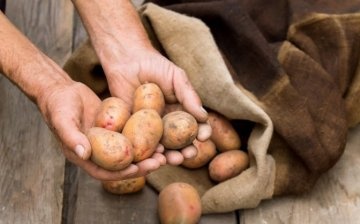



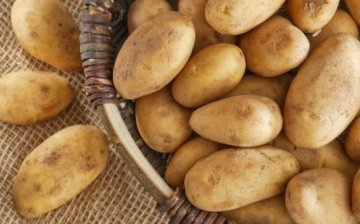
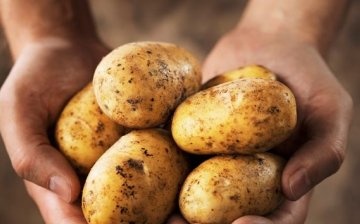
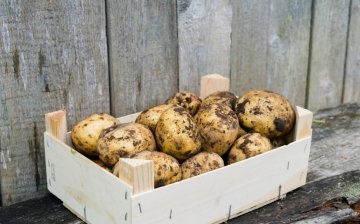







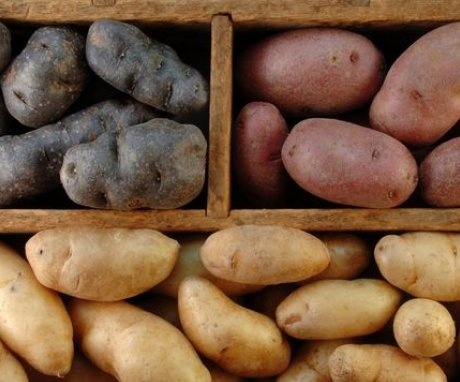
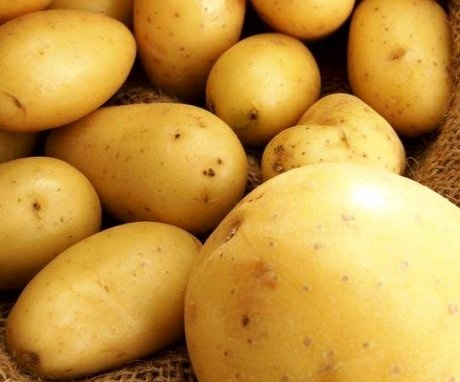

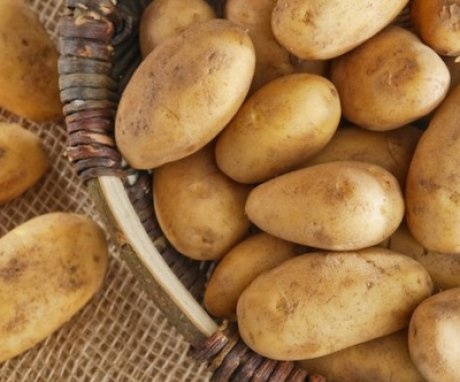
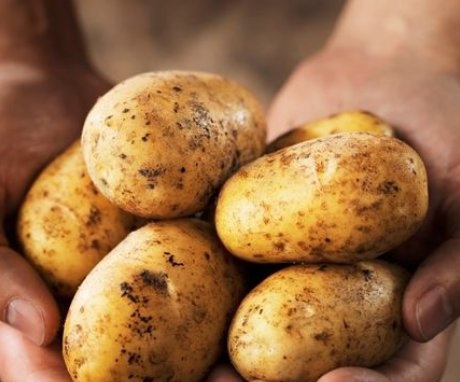
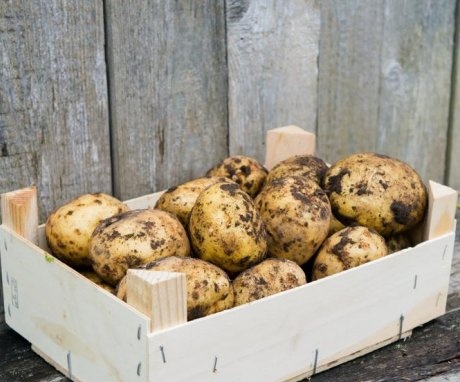
We always store potatoes in the basement, where the temperature in winter is always low positive, about +10 degrees, while, even taking into account the working ventilation in winter frosts, it does not drop below zero. At the same time, good ventilation ensures long-term storage of potatoes.